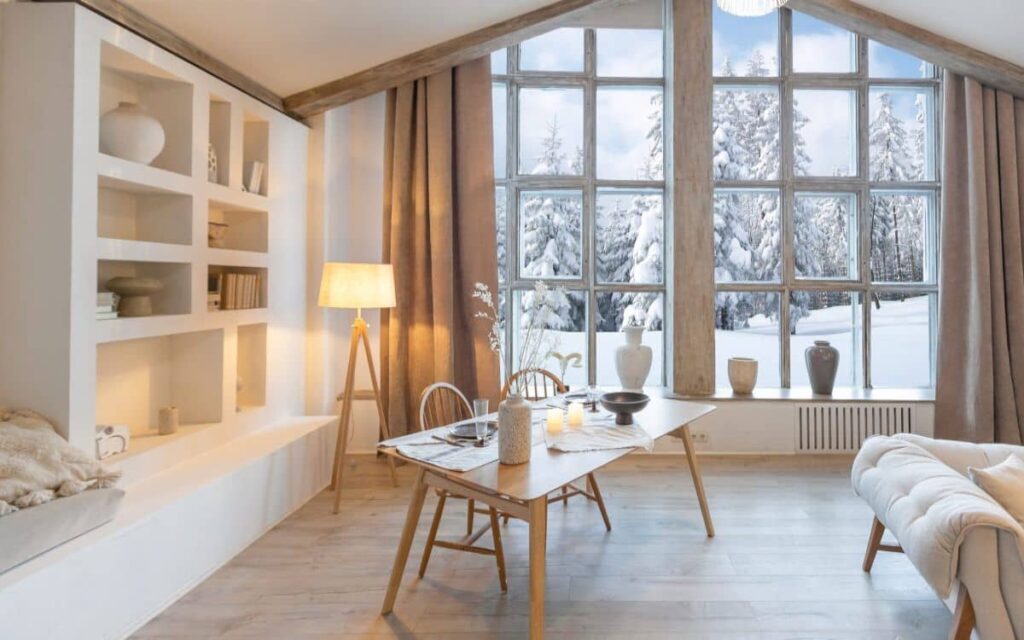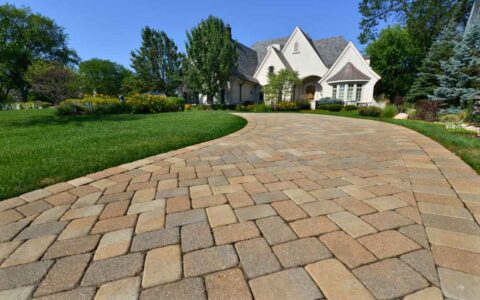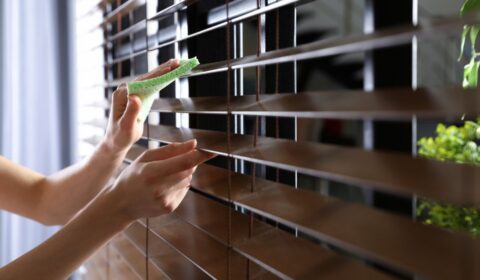Open plan living has become increasingly popular, offering a spacious, connected environment that enhances modern lifestyles. However, while these expansive layouts provide aesthetic and functional benefits, they can also be challenging to heat efficiently. Large open areas allow heat to dissipate quickly, making it difficult to maintain a comfortable temperature during colder months.
If you are struggling to keep your open plan house warm, this comprehensive guide will provide you with essential strategies for improving warmth and efficiency while keeping energy bills under control.
Insulation: The Foundation of a Warm Home
Proper insulation is the first step to keeping an open plan house warm. It helps retain heat and prevents draughts from cooling the space.
- Roof and Loft Insulation: Without adequate loft insulation, heat rises, and warmth escapes. Investing in high-quality loft insulation can make a significant difference.
- Wall Insulation: If your home has cavity walls, consider cavity wall insulation to trap heat inside.
- Floor Insulation: Many homeowners overlook flooring, but insulating beneath floorboards can prevent heat loss and improve overall warmth.
Efficient Heating Solutions
A single radiator or fireplace may not be enough with an open plan design. Consider these heating solutions for even heat distribution:
- Underfloor Heating: This is a fantastic option for open plan spaces, providing consistent warmth throughout the area.
- Zoned Central Heating: Installing multiple heating zones allows you to heat specific areas rather than the entire space.
- Wood-burning Stoves: These can be an excellent addition, creating a cosy atmosphere while efficiently heating large areas.
- Infrared Heaters: These work well in open spaces by directly heating objects and people instead of the air.
Optimising Heat Retention
Heat retention is crucial in an open plan home. Here’s how you can prevent heat from escaping:
- Thermal Curtains and Blinds: Heavy curtains or thermal blinds can block draughts and keep warmth inside.
- Draught Excluders: Place them around doors, windows, and floor gaps to minimise heat loss.
- Double or Triple Glazing: Upgrading to energy-efficient glazing reduces heat loss significantly.
- Internal Doors: If possible, consider installing sliding or folding doors that allow you to close off sections when needed.
Smart Heating Controls
Technology can help optimise your home’s warmth without wasting energy. Consider these smart solutions:
- Programmable Thermostats: Set heating schedules based on your daily routine.
- Smart Radiator Valves: Control individual radiators to heat only the areas in use.
- Zonal Heating Systems: Smart systems can detect room occupancy and adjust heating accordingly.
Maximising Natural Heat Sources
The sun is a free and effective source of heat. Here’s how to make the most of it:
- South-Facing Windows: Keep curtains open during the day to let sunlight naturally warm your space.
- Heat-Absorbing Materials: Stone or tile can be used for flooring and walls to absorb and retain heat.
- Strategic Furniture Placement: Arrange seating areas near sunny spots to take advantage of natural warmth.
Must Read: What is an Open Plan House?
Layering Textiles for Warmth
Soft furnishings can add insulation and enhance the warmth of an open plan home:
- Rugs and Carpets: Placing large rugs over hardwood or tiled floors can prevent heat loss.
- Throws and Blankets: Keep cosy throws and blankets on sofas to provide extra warmth.
- Upholstered Furniture: Fabric-covered furniture retains warmth better than leather or metal surfaces.
Ceiling Fans for Heat Circulation
Ceiling fans are not just for summer; they can be useful in winter, too:
- Reverse the Fan Direction: Running the fan clockwise at a low speed pushes warm air down from the ceiling.
- Improve Airflow: Helps distribute heat evenly across large open areas.
Using Partitioning Techniques
If maintaining warmth is challenging, consider partially enclosing areas:
- Room Dividers: Temporary dividers, such as bookshelves or fabric screens, can help contain heat.
- Sliding Glass Doors: They maintain openness while allowing you to section off areas when needed.
- Curtain Partitions: Thick curtains can be drawn to create smaller, more manageable spaces.
Energy-Efficient Heating Appliances
Upgrading to energy-efficient appliances can help maintain warmth while reducing costs:
- High-Efficiency Boilers: Modern boilers consume less energy while providing effective heating.
- Smart Fireplaces: Gas or electric fireplaces with thermostats ensure efficient heating.
- Energy-Saving Electric Heaters: Look for heaters with thermostatic control to avoid energy wastage.
Regular Maintenance Checks
Routine maintenance ensures your heating system operates at its best:
- Bleed Radiators: Remove trapped air to maintain efficiency.
- Service Your Boiler: Annual servicing prevents issues and ensures optimal performance.
- Check for Draughts: Inspect windows, doors, and vents for any gaps letting in cold air.
Final Thoughts
Keeping an open plan house warm requires a combination of effective insulation, smart heating solutions, and thoughtful design choices. Implementing these strategies allows you to enjoy a cosy and comfortable home even during the coldest months.
Start by assessing your home’s insulation and heating system, then adjust using the tips provided. With a well-thought-out approach, your open plan space can remain warm, inviting, and energy-efficient all year round!
Frequently Asked Questions
How can I keep my open plan house warm without high energy bills?
Use insulation, smart thermostats, thermal curtains, and natural heat sources to maximise warmth while reducing energy usage.
Do ceiling fans really help in winter?
Yes, reversing your ceiling fan direction can push warm air downwards and improve heat circulation.
How can I prevent heat from escaping in an open plan layout?
Installing double glazing, using heavy curtains, sealing draughts, and adding room dividers can help retain heat.
What materials should I use to enhance warmth in an open plan space?
Opt for heat-absorbing materials like stone, wool rugs, upholstered furniture, and layered textiles to enhance warmth.
Read More Informative Blogs At: The Home Designer





